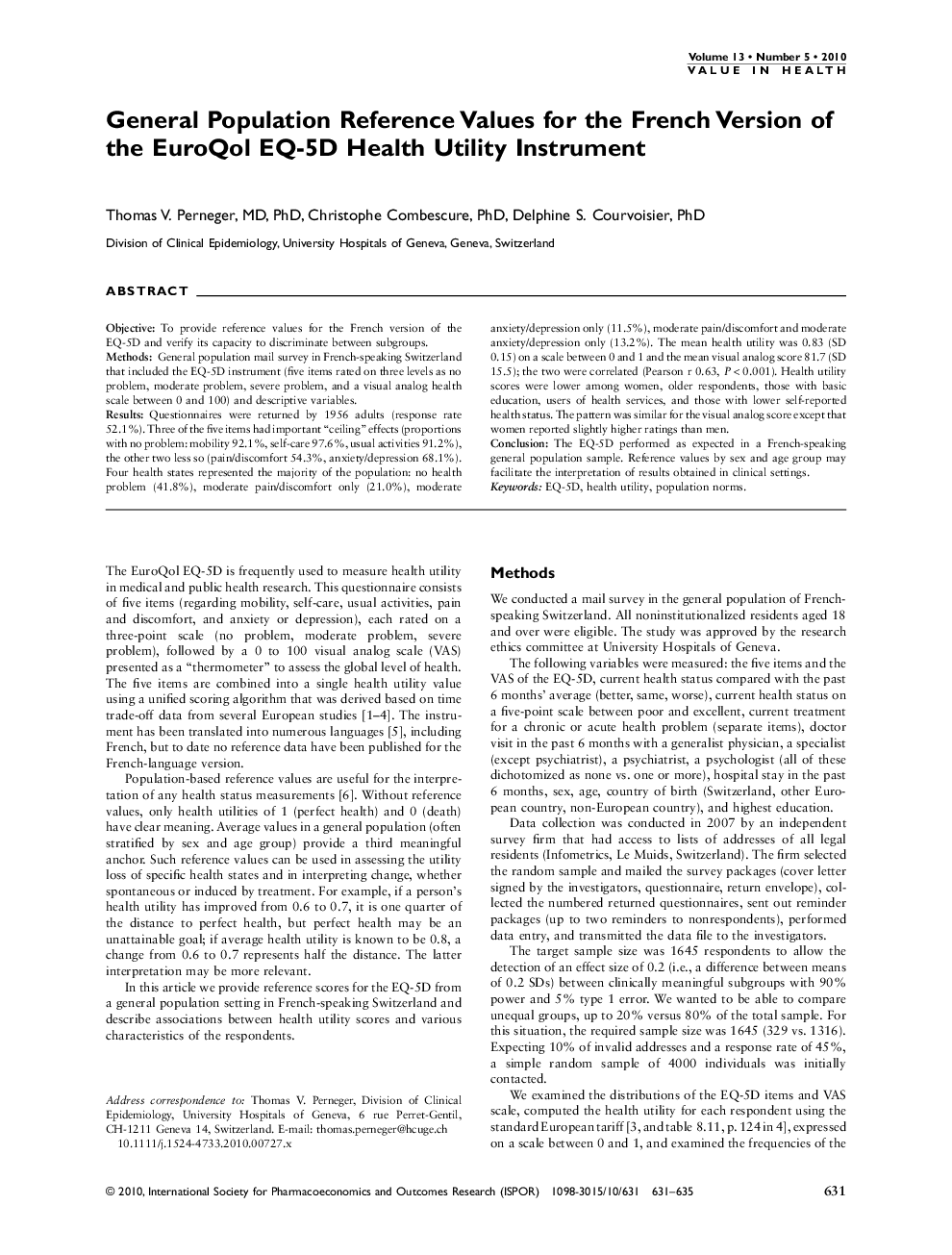| Article ID | Journal | Published Year | Pages | File Type |
|---|---|---|---|---|
| 989695 | Value in Health | 2010 | 5 Pages |
ObjectiveTo provide reference values for the French version of the EQ-5D and verify its capacity to discriminate between subgroups.MethodsGeneral population mail survey in French-speaking Switzerland that included the EQ-5D instrument (five items rated on three levels as no problem, moderate problem, severe problem, and a visual analog health scale between 0 and 100) and descriptive variables.ResultsQuestionnaires were returned by 1956 adults (response rate 52.1%). Three of the five items had important “ceiling” effects (proportions with no problem: mobility 92.1%, self-care 97.6%, usual activities 91.2%), the other two less so (pain/discomfort 54.3%, anxiety/depression 68.1%). Four health states represented the majority of the population: no health problem (41.8%), moderate pain/discomfort only (21.0%), moderate anxiety/depression only (11.5%), moderate pain/discomfort and moderate anxiety/depression only (13.2%). The mean health utility was 0.83 (SD 0.15) on a scale between 0 and 1 and the mean visual analog score 81.7 (SD 15.5); the two were correlated (Pearson r 0.63, P < 0.001). Health utility scores were lower among women, older respondents, those with basic education, users of health services, and those with lower self-reported health status. The pattern was similar for the visual analog score except that women reported slightly higher ratings than men.ConclusionThe EQ-5D performed as expected in a French-speaking general population sample. Reference values by sex and age group may facilitate the interpretation of results obtained in clinical settings.
